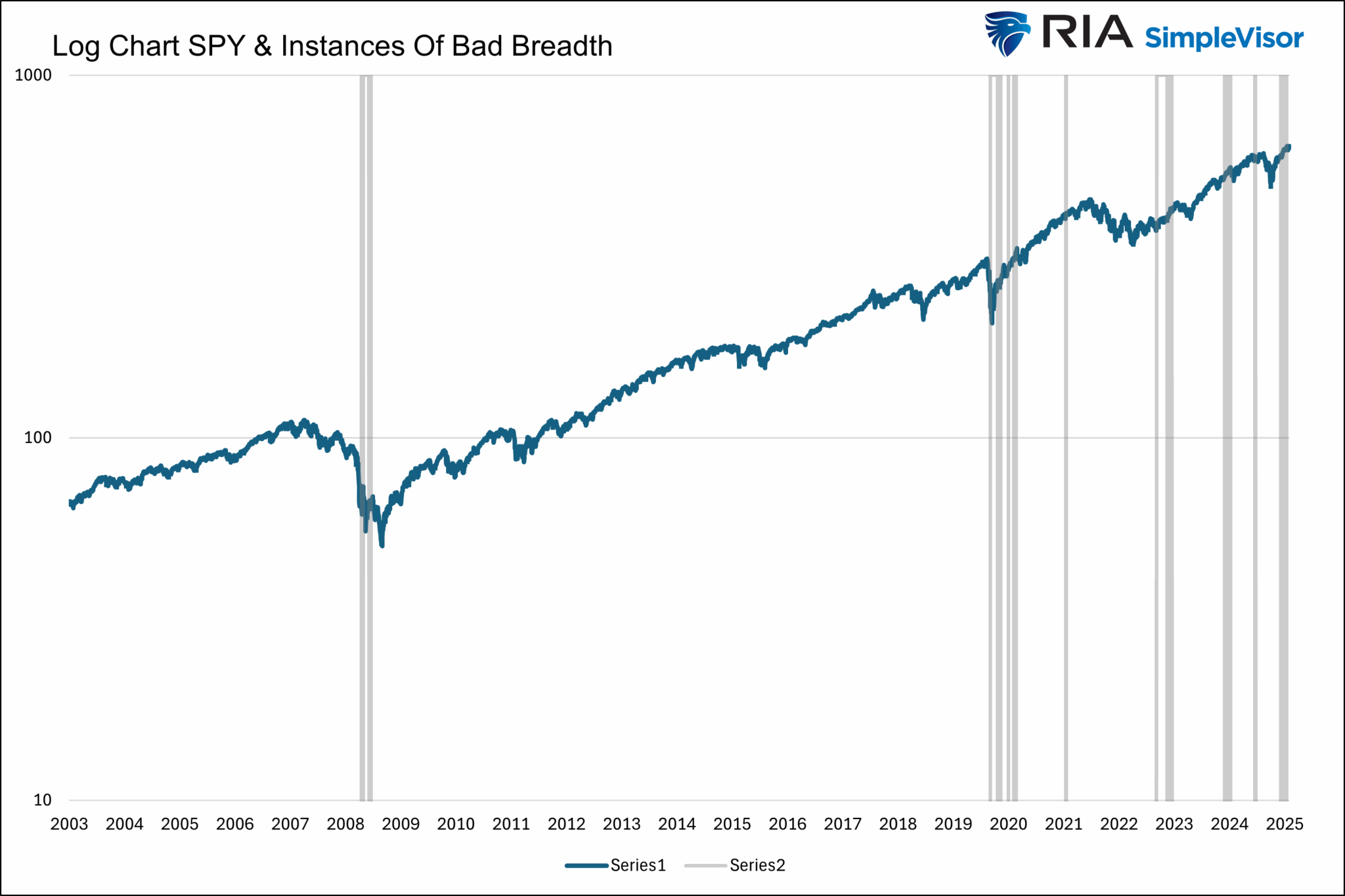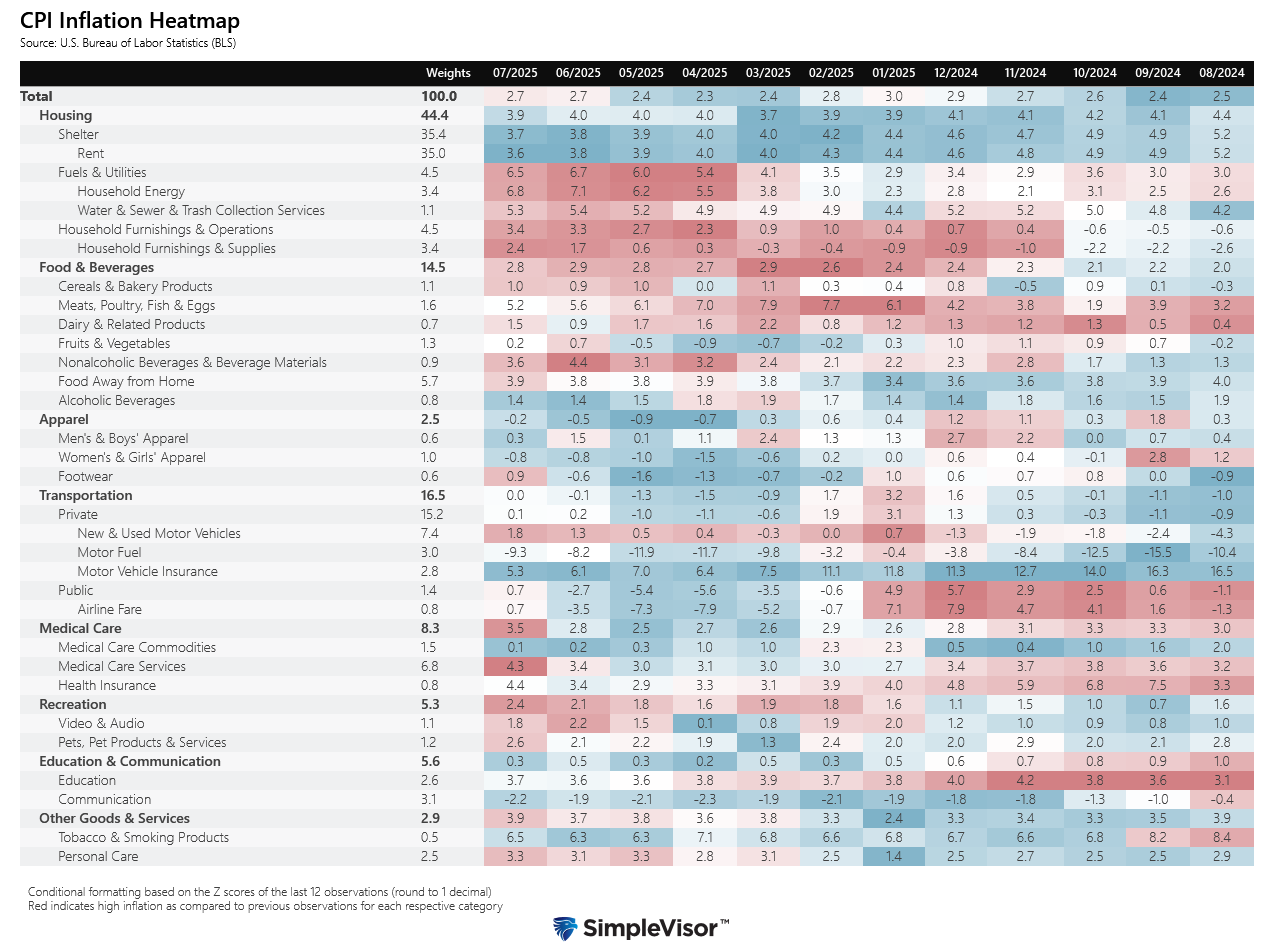EchoStar stock soars after SpaceX valuation set to double
Since the pandemic, markets have been behaving abnormally. One such instance is a somewhat regular occurrence of bad market breadth. In other words, the market-cap weighted S&P 500 drives higher, yet fewer and fewer stocks are participating in the rally. For instance, in Monday’s Commentary, we discussed the current instance of bad breadth. To wit:
Market breadth has also narrowed, as shown, with fewer than 60% of S&P 500 stocks above their 50 and 200-day moving averages, highlighting the reliance on mega-cap technology to prop up index levels.
Given we have seen many instances of bad breadth over the last few years, it’s worth quantifying the number of cases before and after the pandemic.
The graph below charts SPY on a logarithmic scale versus instances of bad breadth. Bad breadth is the 50-day return differential between the marketcap (SPY) and equal weighted (RSP) S&P 500, diverging two standard deviations from the norm.
Between 2003 and the pandemic, there were 38 daily instances. All of these instances occurred between October and December of 2008, during the heart of the financial crisis. In 2020, there were 52 instances. Like 2008, the episodes of poor breadth accompany periods of high volatility.
However, since 2020, there have been 95 instances. That is almost 3x the amount occurring in the 17 years prior to the pandemic. Moreover, many of the cases did not happen when markets were in disarray.
While bad breadth is certainly a warning today, we should be careful to appreciate that this warning has not been a great indicator recently.
CPI Comes In As Expected
{{CPI}} rose 0.2% as expected, keeping the year-over-year {{CPI rate}} at 2.7%. Simply, it was just right, not too hot, not too cold. While the annualized monthly rate is 2.4% and above the Fed’s target, the latest round of data should ease the Fed’s concern that tariffs are highly inflationary.
The table below breaks out inflation by its broader categories and weighting. Shelter and rents continue to cool slowly, which is offsetting some pressure from items that carry much lesser weights. For instance, footwear rose 0.9% last month after declining in the prior months. However, the 0.1% decline in shelter prices offset the rise in footwear by a factor of 4.
It’s possible the price hike in footwear due to tariffs is a one-time, and not persistent, increase. For example, if there is a new 10% tariff on an item and it’s passed through entirely to the consumer, prices should rise by 10%. However, that 10% increase will occur when the tariff takes effect.
Thus, the price change in the following months will likely revert to its prior changes. Moreover, with higher prices, some consumers may negatively impact demand by delaying purchases or buying a different, lower-cost item. As a result, companies that hiked prices due to tariffs may need to reduce prices after the tariff. In some instances, we may see disinflation or deflation after a bump up in prices.
